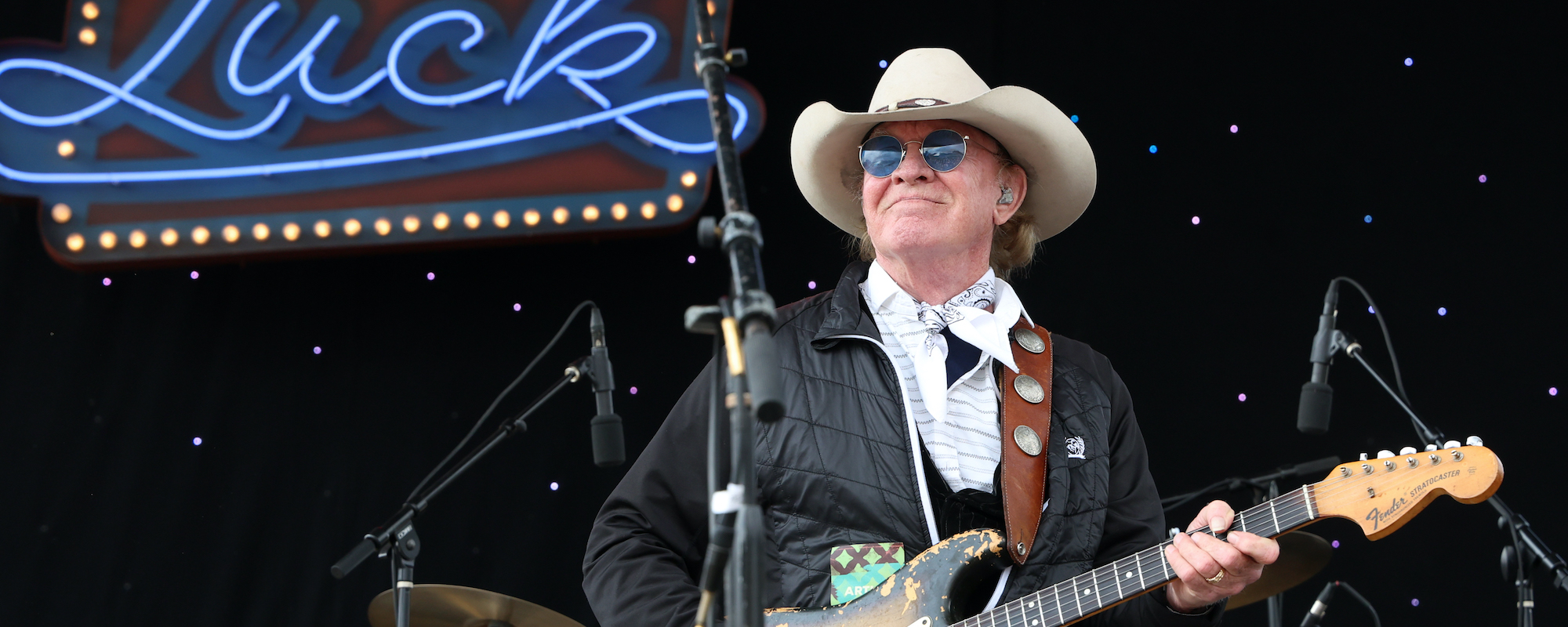Chet Atkins was, first and foremost, a guitar player. He became a producer and a record executive, but he started as a musician and continued learning his craft until he passed away in 2001. Often referred to as “The Country Gentleman,” Atkins had an easygoing playing style that made his technically intricate guitar parts appear simple. He was constantly experimenting with different tunings and new approaches to the instrument. Let’s take a look at five fascinating Chet Atkins facts.
Videos by American Songwriter
1. His First Professional Job Was Playing Fiddle
Atkins first played a ukulele and then a fiddle. When he was nine, he traded an old pistol and some chores to his brother Lowell for a Silvertone guitar. He bought parts from Allied Radio to build his own amplifier and guitar, which consumed his free time. He often played in his school’s bathroom because he liked the echo it created. His first big break came when he began playing with Bill Carlisle at WNOX Radio in Knoxville, Tennessee. Carlisle needed a fiddle player. Only after Carlisle saw Chet playing the guitar he asked the musician to switch instruments. Atkins moved on to play with other acts, including Homer & Jethro, Johnnie & Jack, and The Carter Family, before he moved to Nashville. He incorporated jazz licks and banjo rolls into country music in a way few had before.
2. Gretsch Guitars Had Multiple Chet Atkins Signature Models
In 1947, RCA Records signed Atkins to a recording contract. His first releases failed to chart, but Steve Sholes, the head of RCA’s Nashville division, used Atkins on recording sessions and encouraged him to produce. In fact, over 40 singles were released before he reached the charts with “Mr. Sandman” in 1954. The following year, Atkins became a design consultant for Gretsch, with whom he would work until 1980. When The Beatles made their American debut on The Ed Sullivan Show, George Harrison played a “Chet Atkins Country Gentleman” guitar. This led to a spike in sales of all instruments, but especially “Chet Atkins” guitars.
[RELATED: 5 Live Moments in Memory of Chet Atkins]
3. Atkins Played Guitar on Early Elvis Presley Recordings
When Elvis Presley’s contract was purchased from Sun Records, Sholes enlisted Atkins to play acoustic guitar on “Heartbreak Hotel” and “I Got a Woman.” After the success of those hits, Sholes was promoted to head of pop and moved to New York. Atkins was brought in to take the Nashville spot and inherited a roster of talent. He had success with Jim Reeves, The Browns, and Eddy Arnold. He would go on to produce and work with many big stars, including Jerry Reed, Waylon Jennings, Charley Pride, Skeeter Davis, Bobby Bare, Willie Nelson, Dolly Parton, and Steve Wariner.
4. He Gave The Everly Brothers Their Start
Ike Everly had played thumb-style guitar in Kentucky and followed Atkins’s career. They struck up a friendship, and Atkins was interested in Everly’s sons. Don Everly was writing songs. Atkins invited them to his house in Nashville to record. They used those recordings to pitch songs around town. “Thou Shalt Not Steal” was recorded by Kitty Wells and reached no. 14 on the Billboard country chart. Money from the success of that song allowed Don and his brother Phil to move permanently to Nashville.
In Chet Atkins: A Life In Music, Don Everly said, “When we first came to Nashville, he got the first song recorded, and then we auditioned for RCA, and they turned us down. We auditioned for them again, I think, and they turned us down. He would help us and send us to people that would listen to us. He believed in us. And people would say, ‘Well, if Chet likes them, there must be something there.’ Phil and I looked a little different and sang a little different than most people that come to town. And I could see why they’d be reluctant. We had long hair, just not the typical country boys, I guess.
Chet’s nod of approval was really important.”
“Bye Bye Love,” “Wake up Little Susie,” and “All I Have to Do Is Dream” were all smash hits.
5. Chet Atkins Helped Create the “Nashville Sound”
With the booming success of rock ‘n’ roll, country and western record sales numbers plummeted. Country music singers started trying their hand at singing rock songs to appeal to the teenagers who were buying so many records. Some of these attempts worked better than others. Atkins, Sholes, Owen Bradley, Bob Ferguson, and Bill Porter rallied to develop a way to update the sound of country music. The Nashville sound was created by moving away from fiddles and steel guitars and moving toward string sections and vocal groups. The results were very profitable. “Four Walls” by Jim Reeves, “Oh, Lonesome Me” by Don Gibson, and “End of the World” by Skeeter Davis were good examples of the updated approach.
Atkins signed Charley Pride to RCA in 1965. RCA was hesitant to bring the black singer onto the roster, but Atkins pushed for it. It was agreed they would send the first release to radio stations without any photos. The music would stand for itself.
In Chet Atkins: A Life In Music, he remembered, “We would just gang around the piano, and work up arrangements, and put it down on tape, and ship it out. That’s the way to do it, all the musicians in the studio. It was nice doing it that way. It’s all changed now. You make perfect records now, and the musicians hardly ever meet. But, that’s the way it was back then, and I think that’s the way it should be.”
A 1973 diagnosis of colon cancer caused Atkins to pull back his production schedule. He shifted his focus back to playing guitar. He made albums with Merle Travis, Les Paul, Floyd Cramer, Jerry Reed, Tommy Emmanuel, Mark Knopfler, Amy Grant, and Suzy Bogguss.
Photo by Michael Ochs Archives/Getty Images













Leave a Reply
Only members can comment. Become a member. Already a member? Log in.